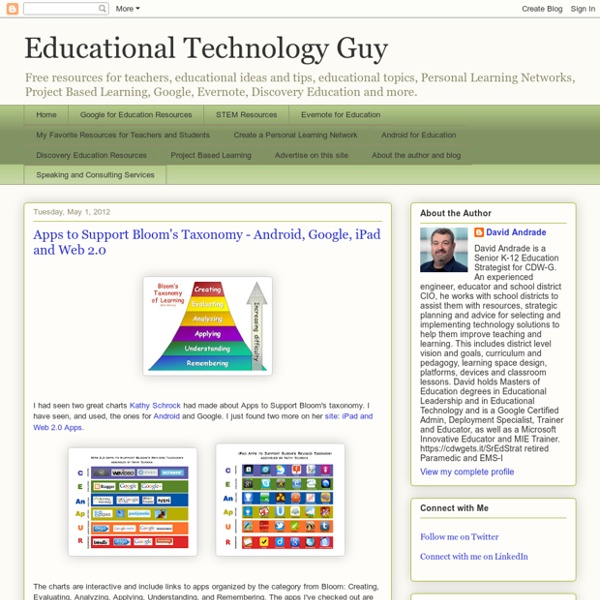Apps to Support Bloom's Taxonomy - Android, Google, iPad and Web 2.0
I had seen two great charts Kathy Schrock had made about Apps to Support Bloom's taxonomy. I have seen, and used, the ones for Android and Google. I just found two more on her site: iPad and Web 2.0 Apps. The charts are interactive and include links to apps organized by the category from Bloom: Creating, Evaluating, Analyzing, Applying, Understanding, and Remembering. The iPad and Android charts also have an activity listed under the apps, such as commenting, video creation, etc. These are great starting points to find apps to use with your students based on Bloom's Taxonomy. Related: Bloom's Taxonomy and Technology - great resources for teachers Android Resources for Education - apps, how-to's, reviews, forums, and more. Android Apps related to Bloom's Taxonomy Google for Educators Resources
Flip This: Bloom’s Taxonomy Should Start with Creating
Teaching Strategies Chris Davis, Powerful Learning Practice LLC By Shelley Wright I think the revised Bloom’s Taxonomy is wrong. I know this statement sounds heretical in the realms of education, but I think this is something we should rethink, especially since it is so widely taught to pre-service teachers. Conceived in 1956 by a group of educators chaired by Benjamin Bloom, the taxonomy classifies skills from least to most complex. Many teachers in many classrooms spend the majority of their time in the basement of the taxonomy, never really addressing or developing the higher order thinking skills that kids need to develop. Rather than starting with knowledge, we start with creating, and eventually discern the knowledge that we need from it. The pyramid creates the impression that there is a scarcity of creativity — only those who can traverse the bottom levels and reach the summit can be creative. Here’s what I propose: we flip Bloom’s taxonomy. Creating at the Forefront Related
Related:
Related:



